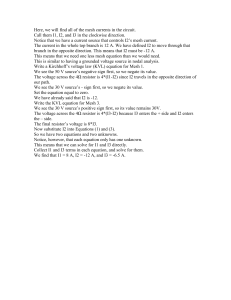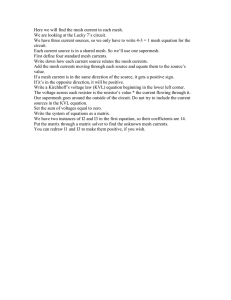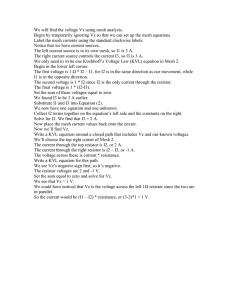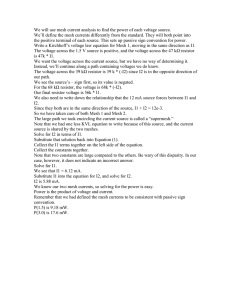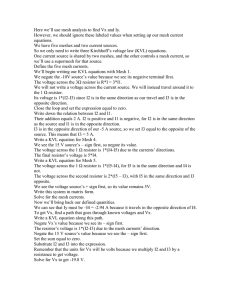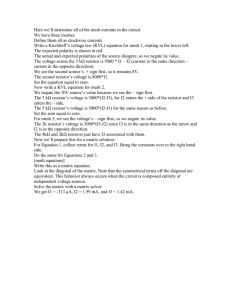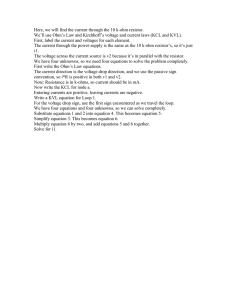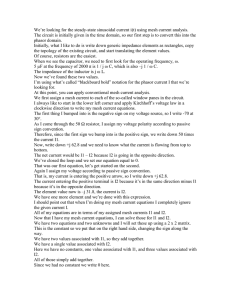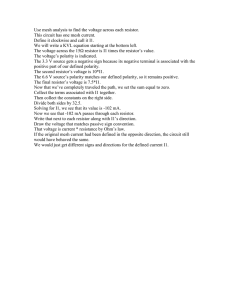Here we’ll use mesh analysis to find the two defined... good practices here are to ignore our defined currents for...
advertisement
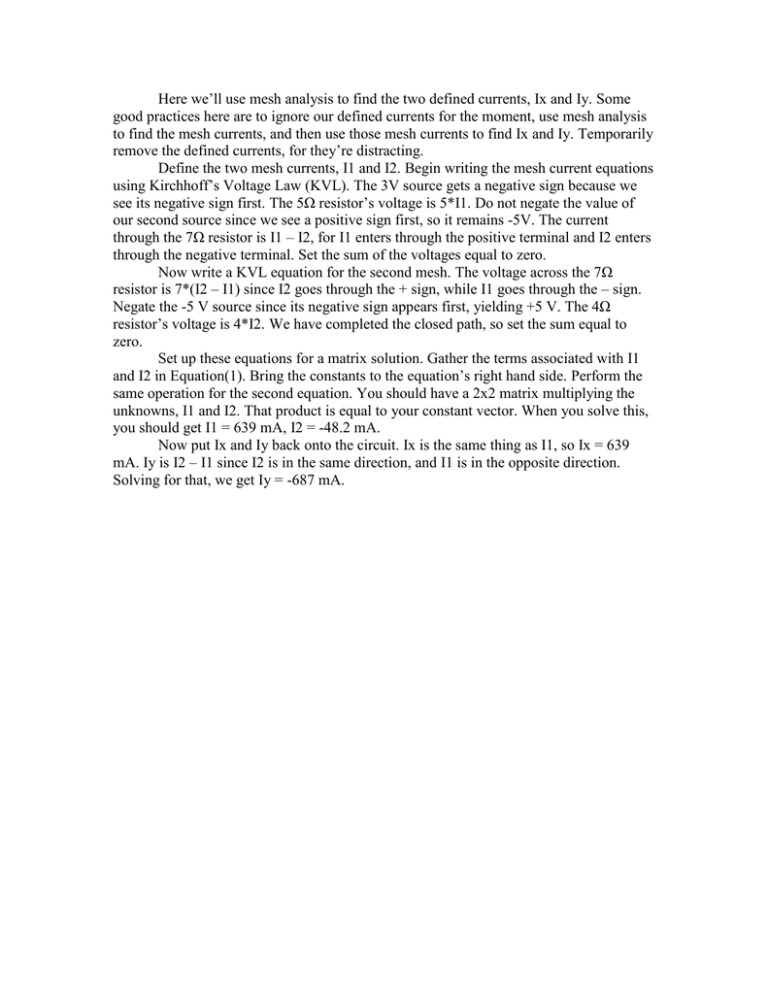
Here we’ll use mesh analysis to find the two defined currents, Ix and Iy. Some good practices here are to ignore our defined currents for the moment, use mesh analysis to find the mesh currents, and then use those mesh currents to find Ix and Iy. Temporarily remove the defined currents, for they’re distracting. Define the two mesh currents, I1 and I2. Begin writing the mesh current equations using Kirchhoff’s Voltage Law (KVL). The 3V source gets a negative sign because we see its negative sign first. The 5Ω resistor’s voltage is 5*I1. Do not negate the value of our second source since we see a positive sign first, so it remains -5V. The current through the 7Ω resistor is I1 – I2, for I1 enters through the positive terminal and I2 enters through the negative terminal. Set the sum of the voltages equal to zero. Now write a KVL equation for the second mesh. The voltage across the 7Ω resistor is 7*(I2 – I1) since I2 goes through the + sign, while I1 goes through the – sign. Negate the -5 V source since its negative sign appears first, yielding +5 V. The 4Ω resistor’s voltage is 4*I2. We have completed the closed path, so set the sum equal to zero. Set up these equations for a matrix solution. Gather the terms associated with I1 and I2 in Equation(1). Bring the constants to the equation’s right hand side. Perform the same operation for the second equation. You should have a 2x2 matrix multiplying the unknowns, I1 and I2. That product is equal to your constant vector. When you solve this, you should get I1 = 639 mA, I2 = -48.2 mA. Now put Ix and Iy back onto the circuit. Ix is the same thing as I1, so Ix = 639 mA. Iy is I2 – I1 since I2 is in the same direction, and I1 is in the opposite direction. Solving for that, we get Iy = -687 mA.
